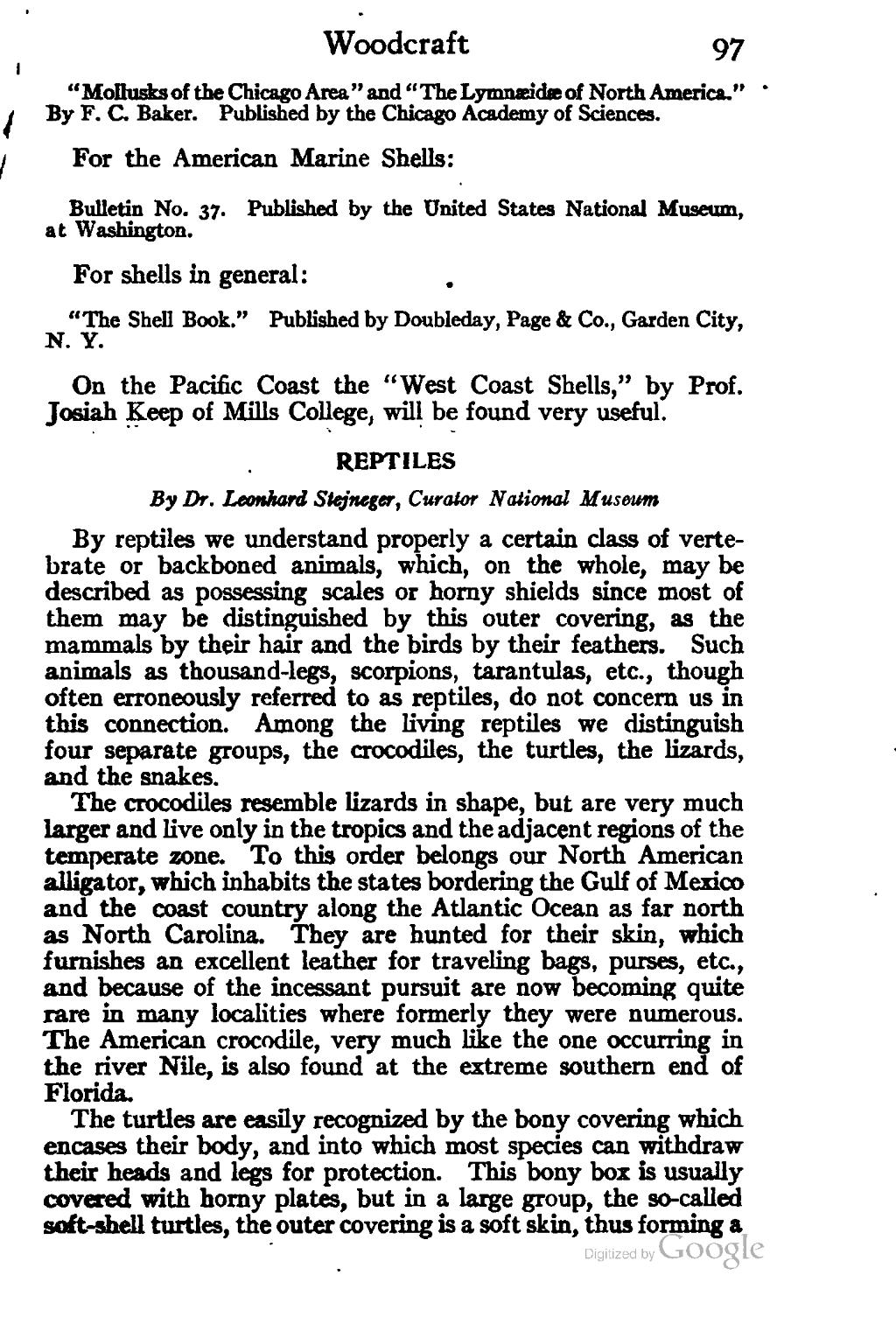Woodcra{t 97 '? Mollusks of the Chicago Area" and ? The Lymumi&e of North Amer/ca."' By F. C. Baker. Published by the Chicago Academy of Sciences. For the American Marine Shells: Bulletin No. 37. Published by the United States National Museum, at W?_?h?n_oton. For shells in general: . ?The Shell Book." Published by Doubleday, Page & Co., Garden City, N.Y. On the Pacific Coast the "West Coast Shells," by Prof. Josiah .Keep of Mil!.? Co?ege, will be found very useful. REPTILES By Dr. ? $tq?gcr, Curator National Muse?/? By reptiles we understand properly a certain class of verte- brate or backboned l?nlm?i.% which, on the whole, may be described as possessing scales or horny shields since most of them m?y be distingui.?hed by thlg outer covering, as the mammals by their hair and the birds by their feathers. Such aninmis as thousand-legs, scorpions, ta?ntulas, etc., though often erroneously referred to as reptiles, do not concern us in this connection. Among the living reptiles we distinguish four separate groups, the crocodiles, the turtles, the lizards, and the snakes. The crocodiles resemble lizards in shape, but are very much larger and live only in the tropics and the adjacent regions of the temperate zone. To this order belongs our North American alligator, which inhabits the states bordering the Gul/of Mexico and the coast country along the Atlantic Ocean as far north as North Carolina. They are hunted for their slrln, which furnishes an excellent leather for traveling bags, punes, etc., and because of the incessant pursuit are now becomln E quite rare in many localities where formerly they were numerous. The American crocodile, very much like the one occurring in the river Nile, is also found at the extreme southern end of Florida? The turtles are e?__sOy recognized by the bony covering which encases their body, and into which most spedes can withdraw thdr heads and legs for protection. This bony box is usually covered with horny plates, but in a large group, the so-called salt-shell turtles, the outer covering is a soft skin, thus fo ?nning & ?t?z?d b?oo?[
Stránka:roll 1911.djvu/118
Z thewoodcraft.org
Tato stránka nebyla zkontrolována
